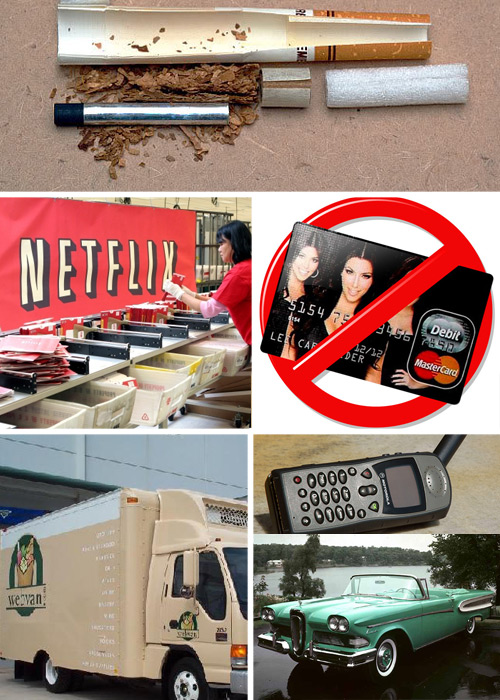
We all know and accept that failure is a natural part of the business cycle. Bad ideas will be rejected by the market, and good ideas will flourish and lead to a more prosperous and efficient economy. Hell, even perfectly good ideas that outlive their usefulness will slowly die ignominious deaths no matter how marketable they were a few years ago. But some business ideas are so catastrophically awful, so based on warped views of what the market wants, that they fail quickly and often in spectacular fashion. And we’re not just talking about your local artisanal cheese shop that failed to flourish in a down market. Most of these ideas had tens, if not hundreds of millions of dollars and big name companies backing them, and still couldn’t manage to survive more than a year.
Motorola Iridium
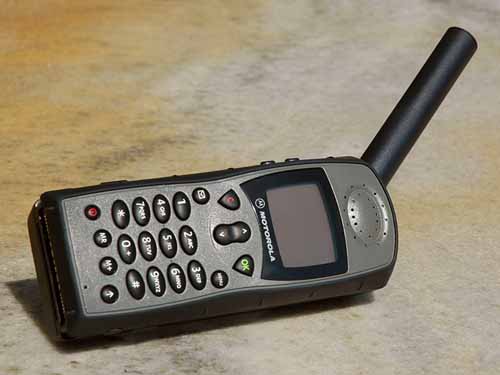
Way back in the late 90s (kids), there were phones that connected to the walls using cords, and voice messages were sent over these vast “wire” networks. But also around this time, the cell phones that we all know and love were beginning to gain widespread popularity (despite their giant size and weight), especially among the wealthy business elite.
The problem was, they didn’t quite work everywhere. And when savvy business execs were negotiating ways to exploit children in southeast Asia, they had some trouble getting reception because this was Vietnam in 1997, where the locals were lucky to own shoes―much less advanced electronics. The only solution at the time was a satellite phone, which were outrageously expensive, bulky, unreliable and altogether impractical.
There were several sane approaches to this problem at the time: Pick up a normal phone. Wait a few years for infrastructure to catch up and cell prices to go down. Not worry about it because Motorola is a cellphone company. Instead, Motorola went the super villain route and launched a dozen or so satellites into low-Earth orbit at the cost of several billion dollars. After several years of work and billions invested, Motorola was finally ready to reveal…another brick of a satellite phone that cost thousands of dollars and was generally unreliable.
Not to mention that the areas where it was necessary to use this device (poor, impoverished, devoid of infrastructure), were also the last place you wanted to pull out a $2,000 phone on the street. Oh did we mention that the phone, like the GPS in your phone now, needed a clear view of the sky to work? To top it all off, by the time the network was complete, cell phone service had started to become widely available in just about every corner of the globe. The network was essentially dead upon launch. The Iridium network is still there, and is reportedly quite popular with Arctic and Antarctic researchers.
Webvan
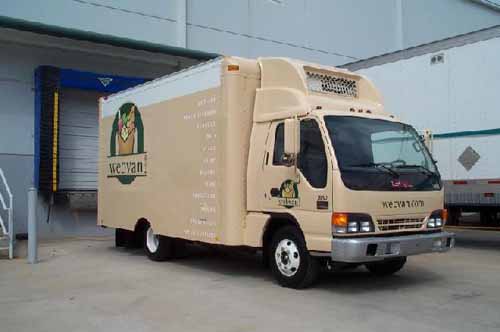
Obviously the dot-com boom of the 90s encouraged some of the most spectacular expenditures on the most bone-headed business ideas, so let’s start getting some of the more hilarious examples out of the way. Webvan was founded in 1999 with a simple idea you think would take off quickly in the Internet age: we have all this Internet shopping, why not allow people to buy groceries online? A few massive infusions of capital later, and Webvan was off, quickly building facilities 10 US cities, guaranteeing a delivery time of 30 minutes or less, and greedily eying another 16 markets.
Hoping to copy Amazon’s success as a first-mover in the space (i.e., the first major player can scoop up market share and hedge out future competitors), Webvan’s executives spent like there was no tomorrow, gobbling up warehouses and delivery trucks. There was just one, tiny, itty-bitty problem: no one had any freaking idea what they were doing. None of the executives had any experience with grocery stores or retail food sales at all. And this led them to miss one all-important detail that you think would have come up in earlier discussions when people were throwing millions of dollars at them: Profit.
Grocery stores, as opposed to the hodge-podge of items being sold on Amazon, have razor-thin profit margins―some of the lowest of any business in the world. And they can’t leave a product on a shelf for weeks, or even days, hoping that someone will buy it. Webvan went from tens of millions to hemorrhaging millions within the span of a few months.
The Kardashian Kard
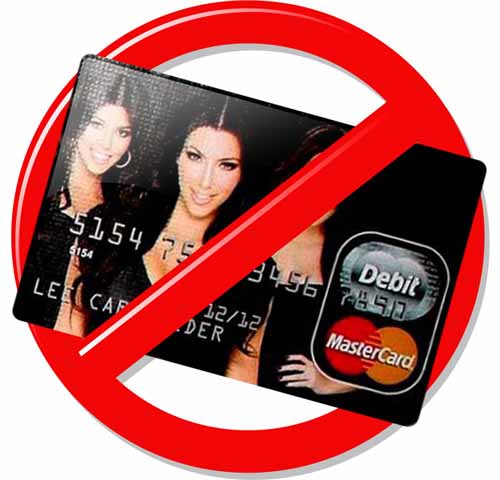
If only this had been called the “Kool Kardashain Kard”, every joke about the Kardashians that every needed to be made would have. Imagine the thrilling board meeting where this idea came up: having exhausted all their make-up, reality shows, marriages, and divorce merchandising, some incredibly boring accountant walked into the room and said, “You know what’s exciting and kool? F*CKING DEBIT KARDS!”
The idea here was that (shudder) tweens could live the lavish Kardashian lifestyle with this stylin’ debit card without learning a single thing about money. It’s the American Dream! Just like the Kardashians, kids could symbolize everything decadent and destructive about modern America. They could do it in style and possibly even without a sex tape.
Fortunately, the Kardashian Kard of Koolness ran into several roadblocks, the first being outrage from parents and advocacy groups. Associating important matters of finance with pop culture and a symbol of status led to outcry as some argued it would teach personal finance through opulence, rather than responsibility. Additionally, the Kards came with various fees which could easily add up to more than $100 a year. The second and more serious problem was pre-paid debit cards are just plain boring and way too much of a hassle. Why buy something, put money on it, then use it to buy season one of Keeping up with the Kardashians when you could just guilt your estranged parents into buying it for you? Unsurprisingly, the kard was a huge flop.
Kozmo.com

Much like Webvan, Kozmo.com jumped on to the hysterical “everyone will buy things on the Internet and everything will be delivered”-bandwagon of the late 90s and early Aughts. Only Kozmo took the Amazon idea and dialed past 11 into 13 territory. They promised to deliver anything, virtually anywhere inside their markets, even if it was only a $0.50 pack of gum. It quickly became a favorite among young professionals and college students, but because this was 2000, the end was coming.
Contrary to popular belief, the idea of delivering just about anything wasn’t all that crazy. The problems Kozmo suffered from were twofold: low margins and jittery investors. Seems that paying someone to deliver a pack of gum tends to cost a lot and not net the company too much money. After an initial capital investment of $280 million, Kozmo had to find a way to make themselves profitable after overextending to too many unprofitable markets. Believe it or not, they actually succeeded, and their top 6 regions were actually briefly profitable.
Of course this was shortly after the NASDAQ tanked. Kozmo’s executives went to investors with their profits, expecting the money needed to go forward with a merger that would keep them afloat. That’s when some genius in the boardroom realized that, even though Kozmo was turning a profit, the margins were still too razor-thin. They wouldn’t see the principle on their $280 million dollars for years down the road, not to mention to two to threefold return on investment they’d begun to expect in the dotcom era. And that is the reason why we all have to get up off our asses and actually walk to the corner store like savages for gum.
XFL Football

In 2001, Vince McMahon and NBC got together to fill the NFL off-season with something other than reruns of Friends. They decided to start a hip, new league with lots of boobs and perhaps the most annoying commercials ever played ad nauseum.
The XFL was supposed to be a meaner, tougher, grittier version of football, designed to attract a younger demographic and, as McMahon elegantly put it, “people who watch movies”. They cobbled together a bunch of sub-NFL level athletes and threw the whole gaudy, over-hyped mess on TV for precisely no one to enjoy. To everyone but McMahon’s lack of surprise, it set new records in how small of an audience a sporting event could get.
But despite our hindsight hatred of this thing that invaded every commercial space from December through February, it’s more football, isn’t it? Who wouldn’t cheer the chance to not have to wait almost 6 months for the new season to start? The problem was that in trying to brand the XFL as a new, edgier, more sensational football league, McMahon and NBC managed to alienate all of their viewers who like football. The overwhelming reason cited for not watching the XFL season was “it looks too much like wrestling”. Fans refused to believe that the entire exercise was genuine and not staged like every other thing McMahon puts his hands on. Though it was slated for at least two seasons, the incredibly low TV ratings of the XFL led to its cancellation after only a single season.
Kibu.com

Kibu.com opened its doors to much fanfare in the fall of 2000, but quickly became yet another victim of the dot com bust. So who cares? Hundreds of seemingly promising businesses back by millions of dollars died in that virtual firestorm. What makes Kibu, a site targeted at adolescent girls, any different than the hundreds of sites that thought they could get rich quick off of ad revenue alone (heh)? Well Kibu set something of a record, even in the crazy dot com era. A short 46 days after their opulent launch party in a San Francisco neighborhood, they shut their doors. In less than a month and a half, the entire company tanked.
So what happened? Well it’s kind of unclear. What’s likely is they made the same mistake countless other dotcoms did, they targeted a tiny, fickle, difficult-to-capture market, and expected minuscule advertising revenue to lead to the astronomical returns on investment their backers were expecting. Still, Kibu remains as one of the shortest-lived vs. most-hyped dotcoms of the early Aughts, despite having a name that sounds like some sort of Japanese fetish site.
The Edsel
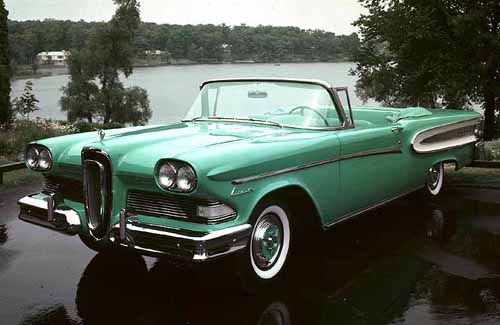
One of the most famous flops in business history, the Edsel was a series of cars produced by Ford from 1958-1960. Spending a mind-boggling $400 million to develop and market the cars, the Edsel (named after Edsel Ford) was supposed to be Ford’s newest and most exciting entry, a shot over the bow of its competitors. Instead it became one of the swiftest and most expensive flops in automotive history.
By all accounts, the Edsel should have succeeded wildly. It was slickly marketed, price-competitive with competitors, and a generally well-built with plenty of top-of-the-line features. But as they rolled them out, Ford started hearing disconcerting stories about consumers taking one look, then walking out of the dealership.
So what was the problem? Well there are many differing opinions on the subject, ranging from the price, marketing, appearance and reliability. All of which sound like an exercise of “It should have worked, buuuuut”
Price: It should have worked because the Edsel was only slightly more expensive than the basic Ford models. Buuuut, no one quite knew what the Edsel was supposed to be (a luxury car? A budget alternative?) — and so the price still seemed too high.
Marketing: The slick marketing campaign built a lot of anticipation around the Edsel’s release by only showing the car through unfocused lenses and thin, gauzy sheets. Buuuut, again, like above, no one knew what the hell the Edsel was supposed to be. Also the name is ugly as sin.
Appearance: Even by today’s standards, the Edsel is not a bad looking car. It’s a bold design to be sure, but it’s still slick and classy. Buuuut, at the time it looked like “an Oldsmobile sucking on a lemon”
Reliability: On paper, the Edsel was a sturdy car built with good parts and meant to last. Buuuut, the assembly of the Edsel often took place in different plants, making quality control nearly impossible. Some cars were shipped to dealers only partially assembled, with instructions in the trunk.
On paper, the Edsel must have looked like a slam dunk to Ford executives, but it’s amazing that with all the numerous tiny problems, no one pointed a single one out.
Premier Smokeless Cigarette

By now you’ve likely ran into at least one douchebag at a party smoking an E-cigarette while gushing about how healthy it is. If he’s really a douche, he’ll straight smoke it in bars and then yell self righteously when he gets thrown out and ruins everyone else’s night (Steve). This futuristic-looking smoking device doesn’t burn tobacco, but instead vaporizes a nicotine gel. The smoker gets their nicotine fix without having to tear up their lungs. Why didn’t anyone think of this before?
They did, in 1988. It was called the the Premier Smokeless Cigarette. Company spokespeople often said that if smokers would just stick it out, they’d quickly acquire a taste for the new cigarettes. Which is unfortunate because consumer studies showed that few smokers made it past their first Premier. Premier survived less than a year, which is amazing because that’s a hell of a lot shorter than Camel Snus and I dare you to find a single person not on an airplane who enjoys those.
Netflix Price Raise

Last July, the popular Netflix service decided to split its streaming and DVD services into two separate deals. Netflix would remain a streaming service, and DVDs would be delivered through a separate account called “Qwikster”. Oh and the price for both services combined went up by around 6 dollars. The justification generally went that Netflix delivered hundreds of free movies instantly for one-fifth the price of your average cable bill. Certainly a small increase shouldn’t bother anyone.
Except they ignored one of the first rules of business: don’t raise prices without offering additional services. As if that wasn’t enough, customers who had DVDs delivered were now responsible for two accounts, and typing in two website addresses is like, really a lot of work, man. Trying to perform damage control, Netflix offered a sincere and heartfelt apology which was about as sincere and heartfelt as Darth Vader and Skeletor’s lovechild.
Eventually, Netflix called it quits. They kept the price increase, but they gave up on the unnecessarily separate services. But not before they lost much of their “Not Comcast” credibility, upward of 800,000 subscribers, and 10% of their quarterly revenue.
boo.com

This high-end online UK retailer launched in 1999. They left the gate with $135 million in venture capital and launched simultaneously in most major European countries. They burned through their venture capital in less than 18 months, which is more than $250,000 a day. Unsurprisingly, the capital ran out before sales caught up, and the company went into bankruptcy in 2000.
The funny story here is that boo.com was actually not doing that terribly when the company fell apart. By the time the money ran out, sales were close to $500,000. While that’s roughly two days of expenditures at boo, in any other environment that would have been enough to justify further capital investment. But this was the dot com era, and investors were vacillating wildly between “Where are my 300% returns in two years!” and “I need to horde my money it’s the end of the world!”. $500k simply wasn’t enough to justify further investment.
But the real reason behind boo’s failure wasn’t investment, it was their terrible, terrible website. While it might not look so bad nowadays, it combined all the terrible popups and animated logos of the late nineties with the bandwidth-heavy flash widgets of 2003. And this was in 1999, when somewhere in the neighborhood of 90% of their customers were still using dial-up.
PAW-PALS

A tiny little shop in Oroville, California, PAW-PALS is probably the worst business idea you’ve never heard of. You know you’re off to a bad start when the origin story of this quaint little store began with two people walking their cats. This is an activity that precisely not a single sane person in the world participates in, but oddly founder Jeffrey Sentose thought was a large, under-serviced market demographic.
The story goes that Sentose was out walking his cat one brisk morning. All of the planets and stars and quasars and brown dwarfs and asteroids and comets in the universe apparently aligned and he met yet another person out walking their cat. The two cats got along so well that Sentose, who according to the article never met a terrible idea he didn’t try to make money off of, decided to create a lavish store for people to bring their cats for cat play-dates.
If you’re shuddering right now, it is because you have actually owned more than one cat and know that cats are evil, angry hellspawn. Especially when other cats are around. And especially when they’ve been plucked from the sunny perch they’ve been lounging on for the past 72 hours to go hang out with other cats and other humans. Cats are the hermetic, possibly homicidal, Ted Kaczynskis of the pet world, and yet Sentose decided he should open a place to bring all these murderous little furballs together like some sort of feline Madrassa. As proof that there is some justice in the world, PAW-PALS failed within a month, presumably because those strange enough to actually visit the place were never heard from again―a point bolstered by noise complaints that (quite seriously) complained of “frequent mrrrowwwwwwwws [sic] loud and shrill enough to chill the bones of any man”.
[PAW-PALS is not actually real. But honestly, could you could tell the difference?]